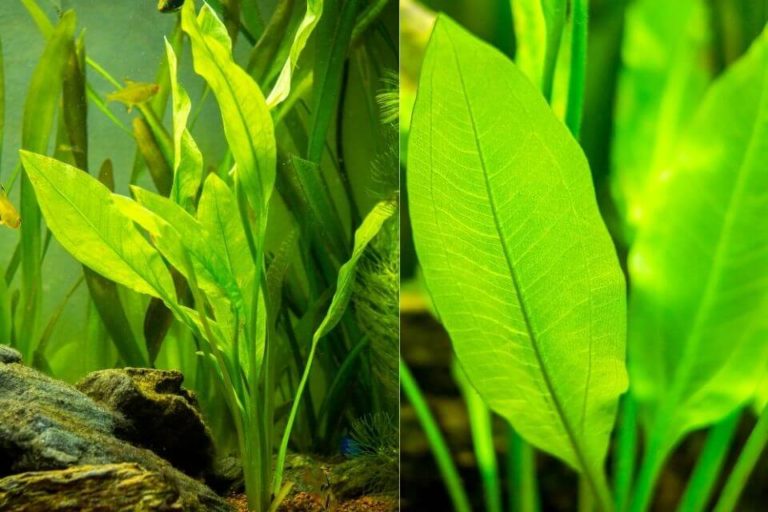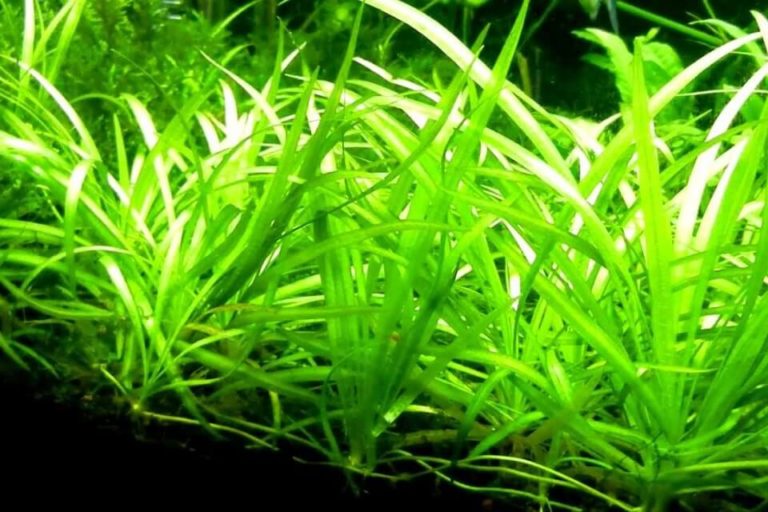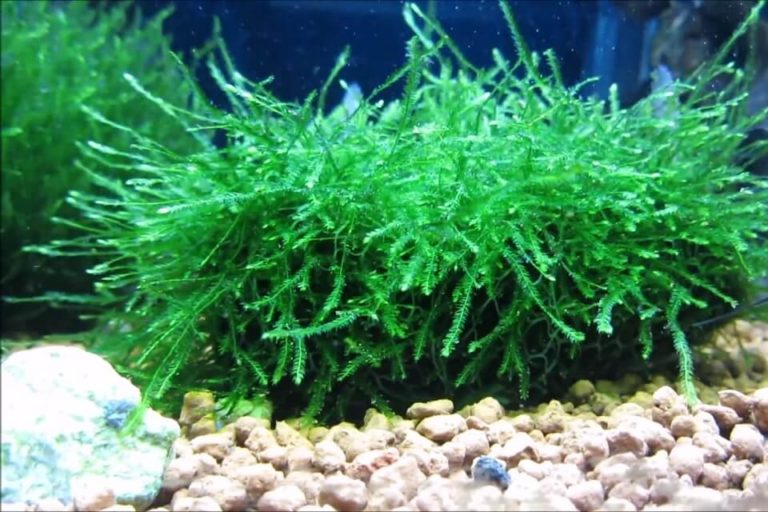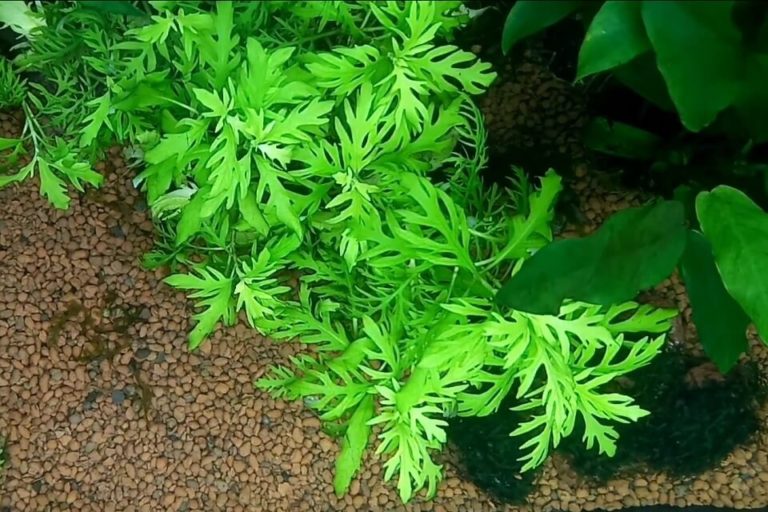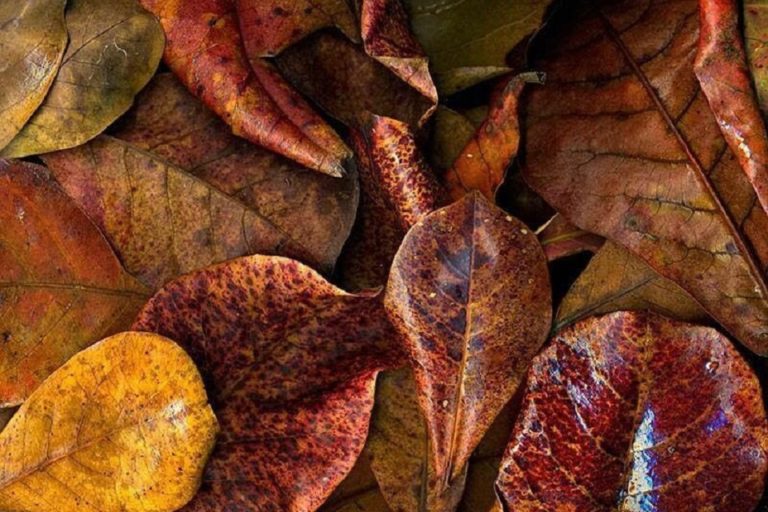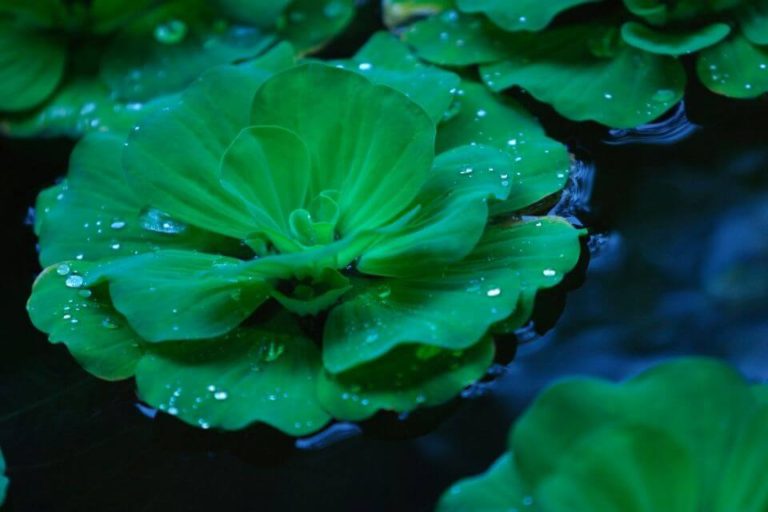Complete Guide To Jungle Val Care, Planting, Propagation and Tank Mates
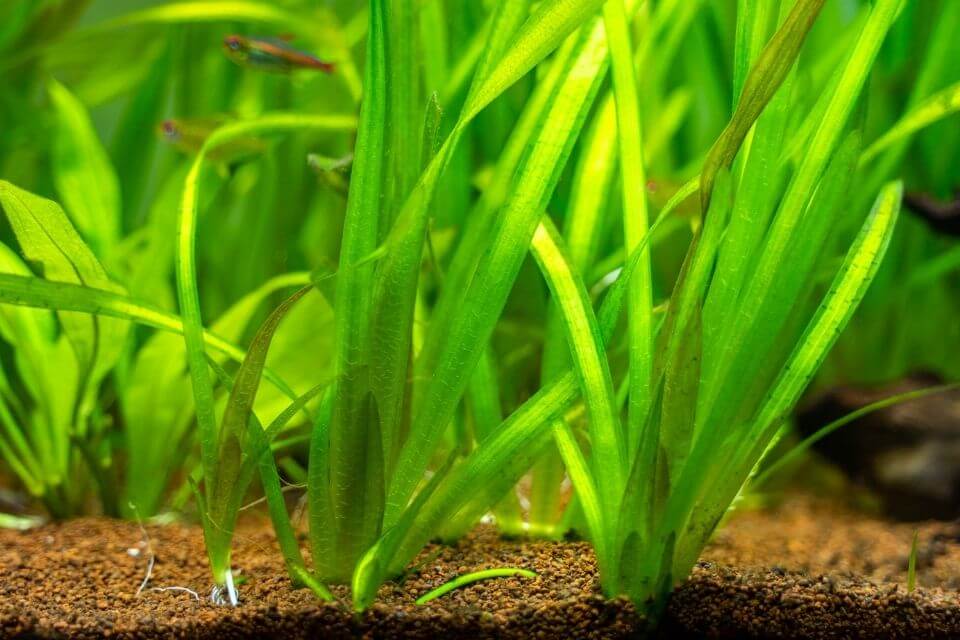
Jungle Val is a freshwater aquatic plant that is very popular among fish keepers. The capacities of the plant that can thrive in a variety of conditions, as well as its hardiness, make it a popular starter plant for aquarium fish keepers.
This aquarium plant is one of the first plants to be grown by fish keepers and has still managed to remain a popular choice for decades.
This article will act as a guide to help you both as a beginner or an expert aquarist take good care of Jungle Val.
| Quick Facts: | |
|---|---|
| Common Names | : Jungle Val, Wild Celery, Water Celery, Tape Grass, American Eelgrass, Eelgrass |
| Scientific Name | : Vallisneria Americana |
| Family | : Hydrocharitaceae |
| Origin | : America, Australia and Asian regions |
| Care Level | : Easy |
| Growth Rate | : Rapid |
| Size | : up to 6 feet long |
| Growth Conditions | : Submersed |
| Propagation | : Runners, and seeds |
| Placement | : Buried in the substrate |
| Substrate | : Sand, Aqua soil or gravel |
| Lighting | : Medium |
| Minimum Tank Size | : 20 - 30 gallons |
| Water Condition | : Freshwater |
| Temperature | : 64 °F - 82 °F (17 °C - 28 °C) |
| Water Hardness | : 8 - 12 dGH |
| Water pH Level | : 6.0 - 9.0 |
| CO2 Level | : Low |
Overview of Jungle Val Plant
Jungle Val aquarium plant is also referred to as Wild Celery, Water Celery, Tape Grass, American Eelgrass, or Eelgrass. It is scientifically named Vallisneria Americana.
It is a flowering plant that is classified under the Hydrocharistaceae family together with other 134 flowering species of plants. Among the few species of plants under the Vallisneria genus, Jungle Val is the most common.
Despite its name being Vallisneria Americana, it is not only found in South, Central, and North America but also Asia and Australia.
It was one of the earliest aquatic plants to be used by fish keepers in home aquariums because of its abundance and convenience of maintenance.
Since it can grow very tall, it is good to use it as a background plant in your tank. However, that does not mean that you are only restricted to use it as a background plant since you can use it in any area of the tank as long as you trim it regularly.
Trimming is not a difficult job and therefore anyone can do it including beginners. You can find Jungle Val for sale in any aquarium store near you at a very affordable price since it is a very popular plant for aquariums.
When you are purchasing Jungle Val ensure that you pick only the healthy plants and avoid those with brown colorations or damaged leaves.
Origin and Distribution
As the name suggests, Vallisneria Americana is found in America but it is also native in Australia and Asia. In its natural habitat, the plant thrives in shallow and slow-moving water in places like ponds, streams, and lakes.
Vallisneria Americana plant also grows in bays and inlets as long as the level of salinity is low. It cannot thrive in water bodies with depths more than ten feet.
Jungle Val plant usually has long leaves of up to six feet and hence they easily form forests that can be used as hiding places for the fish and invertebrates.
Benefits Of Planting It In A Tank
Jungle Val is a very important plant when it comes to improving the conditions of your freshwater tank just like any other live plant. Besides, it has a vivid coloration that makes your tank stunning and appealing to the eye.
It improves the conditions of your tank by first releasing more oxygen into the water during the process of photosynthesis. The oxygen is beneficial to the fish in that aquarium.
Secondly, when you include Jungle Val in the aquarium, it absorbs unwanted chemicals and other pollutants that may be harmful to your fish.
For instance, the byproducts of fish contain ammonia which the Jungle Val uses as a source of nitrogen, and hence that ammonia will not concentrate to toxic levels which can kill your fish.
The ammonia in the aquarium will therefore remain at manageable levels. In addition, Jungle Val plants act as hiding and living places for the fish in the aquarium.
That is because the fish usually like to live among vegetation and hence Jungle Val will only improve the quality of life among the fish and other tank inhabitants.
Appearance, Size, and Growth Rate
Jungle Val aquarium plant has a simple appearance since it is bright green with no other complex colors. However, the plant is still stunning and therefore a great choice for your aquarium.
Vallisneria Americana resembles seagrass and it has long thin leaves. The leaves can stretch through the water column and reach above the waterline. The plant is swayed sideways by the water current and this movement alone is stunning.
The plant’s beauty becomes even more highlighted with the inclusion of fish in that aquarium.

When it comes to their size, these Vallisneria Americana plants can attain a height of up to 6 feet in their natural environment. Jungle Val plants usually do best in shallow waters but they can still grow in deeper waters and still occupy most of the water column.
In the aquarium, Vallisneria Americana does not grow as tall as in the natural environment but it usually has a fast growth rate that is dependent on the lighting and the water conditions.
The growth rate will be slower if the water is either acidic or soft. The plant only grows inside the water and the leaves have to be submerged to survive.
For that reason, the plant will stop growing after reaching the water surface, and even if it continues to grow, the extra parts will float on the water surface.
Jungle Val Care
Taking care of Jungle Vals is very easy since they are hardy and can grow in various conditions. They thrive in most aquariums including the ones with dark water.
However, even though they thrive in many water conditions, they cannot grow in salty waters.
– Tank Size
Tank size should always be the first consideration when it comes to Vallisneria Americana plants. Since these plants have the potential of growing very tall, the bigger the tank the better.
If you have to use a small tank, it has to measure between 20 to 30 gallons as recommended by experienced aquarists. You cannot use a tank that is smaller than that range.
That is because smaller tanks will have less room and hence you cannot include fish in the same tank. Besides, Jungle Val plants easily outgrow smaller tanks and you don’t want your plants to just float on the water and fail to reach their growth potential.
When you grow Jungle Val in an outdoor pond, it will require less maintenance from you and the plant will have a larger space.
– Tank Setup And Substrate
Gravel or sand is the best substrate that you can use for your Vallisneria Americana plants to grow with a powerful root system. That is because these plants are used to the same sand in their natural environment.
However, when you include small rocks or pebbles, these plants will still adapt to them very easily and fast. Sand or gravel substrate offers a nice medium for the robust root system of these plants and hence their roots will be firmly rooted.
After planting these plants, their tiny Rhizomes will not take long before they spread in all directions; beneath and across the substrate.
The roots will then grow bigger and thicker with time hence giving the plants more strength. Their powerful root system will ensure that you do not uproot the plants accidentally.
– Water Parameters
In your aquarium, you should mimic the water conditions found in the natural habitat where these plants grow to ensure that they can thrive. The good thing about these plants is that they can do well in a wide range of conditions.
Jungle Vals do well in warm waters that are slightly alkaline. You should therefore ensure that the water pH level is between 6.0 and 9.0 and the water temperature between 64 °F and 82 °F.
The water should be moderately hard and slow-moving to ensure that the plants are not swayed sideways so strongly. The exact water hardness should range between 8 and 12 dGH.
Soft and acidic waters will slow down the plants’ growth rate. Furthermore, they usually tolerate black waters but with a slower growth rate as well.
– Lighting
Jungle Val aquarium plant usually thrives in shallow waters where the depth is not more than ten feet. For that reason, these plants can get maximum light exposure since they are usually close to the water surface.
For them to thrive in your tank as well, you have to ensure that they get as much light as possible for a minimum of eight to ten hours on a daily basis.
You can mimic the light exposure in their natural environment by using bright LEDs or specialized plant bulbs in your aquarium. Under insufficient light exposure, these plants will adapt to it and still grow but at a much slower rate.
However, extreme low light exposure will result in the death of Jungle Vals since they cannot efficiently and sufficiently manufacture the food they need for survival.
You can easily tell when your Jungle Vals are not getting enough light if you spot discoloration or wilting. When they show such alarms, you should check and increase their light exposure to save the plants from dying.
– CO2, and Fertilizer
Naturally, Jungle Vals thrive under little CO2 since they grow in the water. Water contains little amounts of this gas and therefore Vallisneria Americana does not need additional CO2 to grow.
However, you should add iron-rich fertilizer to the tank every week as you change the water.
How do you Plant Jungle Vals?
Planting Jungle Vals is not a complex activity and therefore anyone can do it. These plants are available to you either in form of propagations or in pots and all you need to do is remove the plant from its medium and plant it into the substrate inside your aquarium.
Due to its growth potential, it is recommended to plant Jungle Val at the back of the tank where its height will not be an inconvenience.
The base of Jungle Val, also known as the crown, should remain above the substrate since if buried, the plant will die after shedding its leaves.
However, this plant “melts “sometimes and loses the weaker leaves hence you should not mistake “melting” for dying.
When the roots of this plant establish, the process of maintaining it becomes easier and thus you will do away with some practices like fertilizer applications.
Pruning And Trimming Jungle Val
The aquarist community has had contention when it comes to pruning and trimming Jungle Val.
Some argue that after trimming their plants, they experience no issues but some say that pruning makes the leaves rot and may alter the water conditions in the tank hence causing health problems to your fish.
It is therefore great if you avoid pruning your plants but if you have to, ensure that you are using sharp shears by sharpening them thoroughly before use.
When pruning you should make a clean cut to minimize as much as possible any chances of rot.

Propagation
Jungle Val aquarium plant usually reproduces in two ways; through runners or seeds.
In their natural habitat, the Vallisneria Americana plant produces a female flower which then moves and floats on the surface of the water.
The male flowers are then released after that. The female flowers meet their counterparts male flowers on the water surface for pollination.
However, this is a cycle that commonly occurs in the wild but not in an aquarium setting. In the tanks, most Jungle Vals reproduce through runners.
The mother plant produces runners under the substrate and the runner will develop a root system and become an independent plant that grows just near the mother plant.
If you wish to separate the two plants and relocate the runner into a different tank, you can wait until the runner develops some leaves and then relocate it to your desired area.
Moving the runner from the parent plant before it can develop will only kill it and hence some patience is required.
Compatible Tank Mates
You have numerous options when deciding on the Jungle Val tank mates. That is because Jungle Val is an essential community plant that is stunning and flexible.
Fish can swim through and around it with ease. The plant has an extensive and robust root system that makes it stay rooted into the substrate even in the presence of rowdy fish.
That way, it is not easily uprooted and hence it’s a suitable plant to include in an aquarium where there are stronger fish. The plant stays upright and secure at all times regardless of the aggressive behavior of the fish in the tank.
For that reason, you can place Vallisneria Americana even in the tank where fish are known to be digger types.
Even if the fish dig around the plant, it remains rooted and secured in place and the plant would not be killed by such a kind of fish. In the same tank, you can even have herbivorous fish that nibble at the plant but cannot manage to destroy the plant in the long run.
Other great tank mates include invertebrates such as:
- Mystery Snails
- Ramshorn Snails
- Bamboo Shrimp
- Ghost Shrimp
- Amano Shrimp
- Nerite Snails
- Blue Crayfish
- Mexican Dwarf Crayfish
- Freshwater Angelfish
- Molly Fish
Furthermore, you can include other aquatic plants in the same tank with Vallisneria Americana while ensuring they are not densely packed together. However, you should avoid Crabs species since they can destroy this plant so easily.
Where We Find Jungle Val For Sale?
These aquarium plants are very popular freshwater aquatic plants and therefore you can find Jungle Val for sale easily in any aquarium store near you. You can also purchase them online.
Average Price Of Jungle Val Plant
Jungle Vals are affordable due to their popularity. The average price of a Jungle Val Plant ranges between $12.00 to $15.00.
What Are The Differences Between Italian Val Vs Jungle Val?
The Italian Val has runners and roots which are hair-like and very small. On the contrary, Jungle Val has an extensive and powerful root system that makes it stronger.
For that reason, Italian Val does best in the finer substrate while Jungle Val can do well even in coarse gravel.
Is Jungle Val Easy To Grow?
Jungle Val is a species of aquatic plant that is indeed easy to grow in your aquarium. That is because it does not require too much maintenance since it’s a hardy plant. Also, you can have along with a wide range of different tank mates since it is quite resistant to destruction.
Will Jungle Val Grow In Gravel?
Yes, Jungle Val can grow in gravel. Vallisneria Americana contains a robust root system that can easily cling to the gravel substrate. To ensure healthy growth, you can add fertilizers to the substrate so that Jungle Val can get maximum nutrition from the gravel substrate.
Is Jungle Val A Root Feeder?
Yes. Jungle Val absorbs nutrients from its extensive and strong root system. The nutrients are either derived from the substrate or the water column. That means that you need to include a substrate that is either sand or gravel in your aquarium.
Is Jungle Val Good For Aquariums?
Yes. They are great plants to include in your aquarium since they make fishkeeping more manageable.
This is especially so if you have destructive fish in the aquarium since the plants cannot be easily destroyed. They are also suitable for aquariums since they are less demanding and easy to grow.
Does Jungle Val Need To Be Planted?
Jungle Val grows underwater with its roots deeply secured in the substrate. It commonly shares the aquarium with fish which are diggers since these fish can’t uproot or dislocate it due to its powerful root system.
Can Jungle Val Grow Emersed?
No. Jungle Val only grows in shallow waters since when it is completely immersed, it might lack enough sunlight which it requires for photosynthesis. Inadequate sunlight will lead to the plant dying.
Does Jungle Val Need CO2?
No, it does not need an additional CO2 supply. Since Jungle Val is adapted to growing underwater where there is little Carbon dioxide, it does not require any additional CO2 apart from the little amounts found in the water.
What the plant needs for faster and healthy growth are adequate exposure to light and iron-rich fertilizer.
Conclusion
In conclusion, Jungle Val is an aquatic plant that does not require intensive care and hence can do well in different water conditions without much of your input.
You can begin with a few plants then propagate the plant with time to have more of them. You can use Jungle Vals even with destructive species of fish since the plant has tough leaves and a robust root system.


